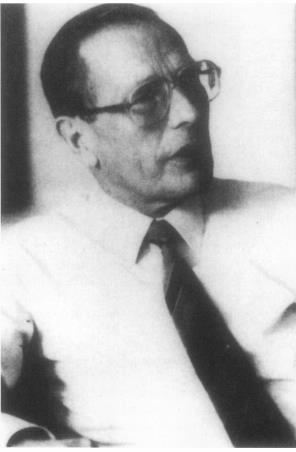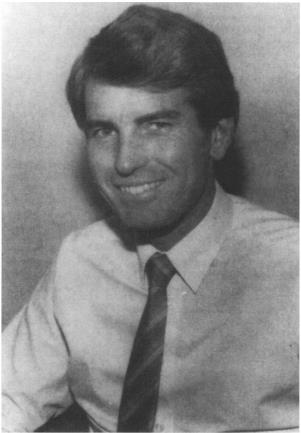Part XXI- Episode 4- When One Door Closes- The Advent of Myocardial Protection Standing on Tall Shoulders- The History of Cardiac Surgery Thomas N Muziani PA-C, CP
“In all chaos there is cosmos, in all disorder a secret order” – Carl Gustav Jung (1875- 1961)
Prologue
By 1960, the United States cardiac community collectively agreed to abandon the use of potassium based electro-chemical arrest. The chief pharmacist at our institution, a full professor of pharmacology, decided to design stickers with skull and cross bones to place on any item that contained potassium (the legal department suggested he discontinue that practice- bad visual in a hospital). So cardiac surgery regressed to the “old arts”. Most surgeons either opted for direct coronary perfusion, intermittent aortic occlusion, topical hypothermia or normothermic ischemia. They were all less-than-ideal applications of myocardial protection and each technique presented its own distinct downsides.
Rethinking the nuances of potassium-based cardioplegia
From a historical perspective, European investigators never tempered their active research programs into chemical cardioplegia during the 1960’s. The renaissance of potassium-based cardioplegia during mid-1970 has direct lineage to the creative innovators across Europe and the Baltics. Prior to the Internet, dissemination of “what everyone else was doing” filtered at a Glacial pace…when Glacier’s still moved only an inch a year. During late 1960’s early 70’s all European or Baltic region investigations were published or presented in their respective languages. Lectures and observations on their separate outcomes usually remained somewhat regional until broadcast through a national symposium.
Hoelscher, while actively involved with Free University School of Medicine, Berlin during the 1960’s published a series of articles in German-language periodicals. He was attempting to validate if the wide-spread opposition to potassium citrate cardioplegia was truly warranted. Through his research Hoelscher made the determination that deleterious effects of Melrose solution were not a result of the potassium ion, but due to calcium and magnesium’s chelating action on the citrate ion. This dual action of citrate appeared to be the genesis in triggering the cascade prompting intra- and extracellular edema.
Hoelscher formulated experiments with magnesium chloride and procaine amide, both compounds known to display membrane-stabilizing cardiac-arresting capability. In 1967, in the Journal of Cardiovascular Surgery Hoelscher compared magnesium-chloride arrest against potassium-citrate arrest. His assessment was that potassium-citrate arrest triggered histologic and functional defects upon reperfusion…but magnesium-chloride plus procaine-amide arrest prompted rapid quiescence with reproducible uneventful reanimation.
During this same time period 1975 another German pioneer, Hans J. Bretschneider, while at University of Göttingen’s Institute of Physiology defined the logic and rationale behind “intracellular” cardioplegic solutions. The sodium concentration promulgated in “Bretschneider” solution, as they came to be known, were equivalent to physiologic intracellular concentration of sodium. The action would inhibit the excitation potential thereby preventing myocardial contraction. Maintaining a calcium-free environment also quiets contraction (a basic tenet of Pedro del Nido’s studies). Procaine was added to the solution to maintain membrane stabilization with mannitol providing ideal osmolarity.

Hans J. Bretschneider
Emboldened with this well researched pragmatic logic for protecting the heart T. Søndergaard and his fellow researchers from University of Aarhus, Denmark clinically applied modified Bretschneider solution in 1975. He published a one hundred patient cohort of aortic valve replacement patients utilizing Bretschneider cardioplegia. Søndergaard’s preferred technique required perfusing the aortic root with strictly glucose and blood at a pressure of 100cm H₂O. Concurrently, he cooled the pericardial cavity at 4°C glucose solution. He then replaced the aortic infusion with Bretschneider’s solution No. 3 until quiescence. Ischemic times ranged from 70 to 100 minutes. With 100 patients there were 6 deaths not attributed to any deprivation of myocardial protection. The group determined that Bretschneider solution was superior to the then-current technique of strictly coronary perfusion.
In disseminating the research of Bretschneider’s collective works, two factors became apparent as to why most of this very erudite experimentation went largely unnoticed. The first seems to be a general malaise about utilizing chemical ischemic arrest during the 1960’s. The second factor and most likely the more pertinent was that Hans Bretschneider published his findings exclusively in German journals in his mother tongue.
Another individual that deserves mention during this timeframe was U. Kirsch from Hamburg, Germany. His 1972 research into why magnesium-aspartate and procaine hydrochloride retarded the decaying process of organic phosphates within the myocardium was rather astute. He published his data on uneventful normothermic arrest for up to 80 minutes. His solution contained 2.5% magnesium-aspartate and 0.35 procaine hydrochloride.
St. Thomas Hospital, London and David J. Hearse
In 1976 the journal Circulation published a study authored by David J. Hearse and Mark Braimbridge involving isolated rat hearts. The impact of this simple study utilizing excised rat hearts was rather profound. Mark Braimbridge, David Hearse’s colleague and physician mentor stated that: “many surgeons have said to me since that it was this article which first persuaded them that cardioplegia was the way to go.”

Dr. David Hearse
Hearse dissected the basic compounds found in dominant forms for crystalloid cardioplegic solutions utilized today. The origin for this investigation must be attributed to the vision of Mark Braimbridge. Braimbridge recalled that he had an epiphany listening to lectures from both Bretschneider and Søndergaard in Oslo 1974- including a presentation by Kirsch in Hamburg 1975. These collective experimentations provided the impetus for his own studies on myocardial protection. Braimbridge recruited David Hearse from Imperial College to St. Thomas Hospital, London. Braimbridge related his fascination from the lectures on the effects of potassium, magnesium and procaine and suggested that Hearse should initiate his own research and experimentation.
After exhaustive review of “intracellular” solutions published by Bretschneider and Kirsch, Hearse proposed a major shift in a different direction with an “extracellular” cardioplegic solution. His foundational solution was based on Krebs Henseleit bicarbonate buffered solution at pH 7.4. Then he compounded 12mM potassium, 16mM magnesium, 10mM ATP, 10mM creatine phosphate and 1mM procaine. Infusion of his solution into an isolated perfused rat heart demonstrated an improvement of aortic flow from 0% to 82% after 30 minutes of normothermic ischemia. Hearse then went on to postulate that topical hypothermia would possibly increase the protective aspects of his solution even further.
As a result of Hearse’s research and findings, Braimbridge perfused clinically cold cardioplegia formulated as St. Thomas Hospital Solution No. 1 in 1975.
Composition St. Thomas Hospital Solution No. 1
Two minutes intra-aortic infusion hypothermic St. Thomas Hospital Solution No 1 reduced myocardial temperatures to between 8° C and 16° C. The clinical outcomes validated that after 90 minutes of aortic occlusion with St. Thomas Hospital Solution No 1, myocardial protection was similar to coronary perfusion. After 120 minutes of ischemia, a second dose of cardioplegia was required to provide the same protection as coronary perfusion.
After exhaustive studies were implemented utilizing detailed dose-response curves to develop an optimal cardioplegic solution, St Thomas Hospital Solution No. 1 was modified. The final result in 1981, Hearse introduced St. Thomas Hospital Solution No 2, which became commercially available under the brand name “Plegisol”. The new solution reduced the potassium, sodium and calcium content, eliminated procaine, added bicarbonate, adjusted pH to 7.8 and reduced osmolarity.
In 1987, Hearse and Braimbridge decided to publish a comparative study that would demonstrate the superiority of Solution No. 2 over Solution No. 1. Regardless of the fact that differences between the two solutions were extensive, Hearse and Braimbridge concluded that superiority could be attributed to the lower calcium content of solution No. 2 (1.2 versus 2.4mM).
These published results re-ignited enthusiasm and provoked a re-imagining in the potential for potassium based electro-mechanical arrest in the United States. Cardiac surgery and organ transplantation now progressed at meteoric speed. The cumulative empirical knowledge gained during the first thirty years of cardiac surgery spread its seed to ignite the imagination with a new generation of disruptors.
